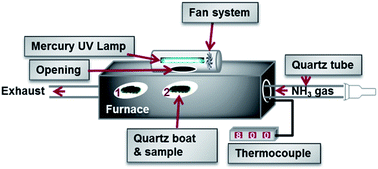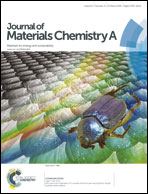UV-assisted synthesis of indium nitride nano and microstructures†
Abstract
Indium nitride (InN) has been made the first time by a combined thermal/UV photo-assisted process. Indium oxide (In2O3) was reacted with ammonia using two different procedures in which either the ammonia was photolysed or both In2O3 and ammonia were photolysed. A wide range of InN structures were made by these procedures that were determined by the reaction conditions (time, temperature). The reaction of In2O3 with photolysed NH3 gave InN rod-like structures that were made of stacked cones (6 h/750 °C) or discs (6 h/800 °C) and that contained some In2O3 residue. In contrast, photolysis of both In2O3 and NH3 gave InN nanowires and pure InN nanotubes filled with In metal (>90%). The transformation of the 3D In2O3 particles to the tubular 1D InN was monitored as a function of time (1–4 h) and temperature (700–800 °C); the product formed was very sensitive to temperature. The band gap of the In filled InN nanotubes was found to be 1.89 eV.


 Please wait while we load your content...
Please wait while we load your content...